As a beekeeper and honey taster, I have a passion for finding and sharing the best honeys in the world. One of my favorites is Wedderspoon Raw Monofloral Manuka Honey, which comes from the wild Manuka flowers that bloom in the pristine forests of New Zealand. This honey is a treasure of nature, with amazing healing and nutritional properties that have been recognized by the Maori people for generations.
Wedderspoon Raw Monofloral Manuka Honey is not only a delight for the taste buds, but also a powerhouse of antioxidants, enzymes, and phytonutrients that can enhance your immunity, digestion, skin, and more. In this review, I will tell you more about the benefits, features, and quality of Wedderspoon Raw Monofloral Manuka Honey, and help you decide if it is the right honey for you.
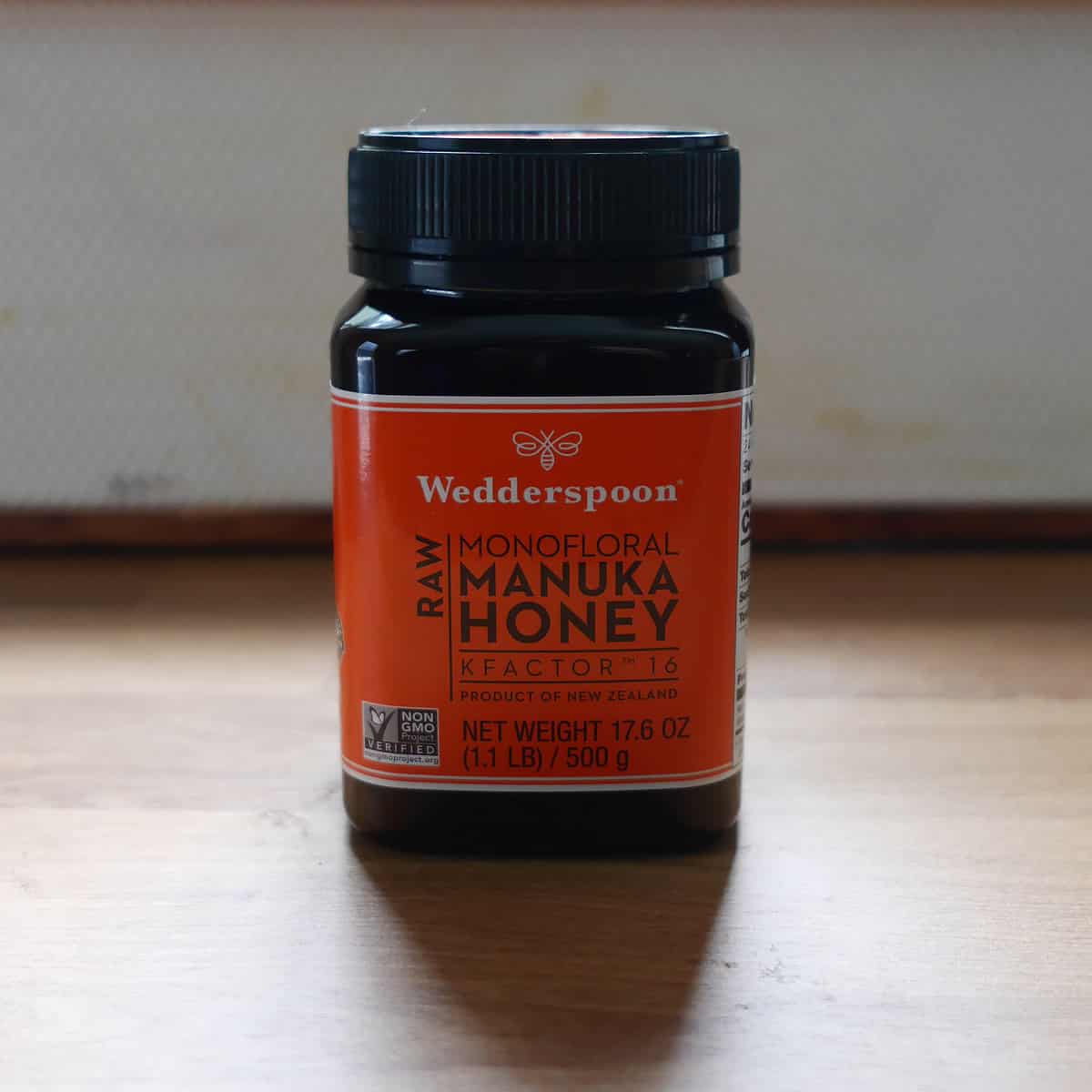
Welcome to the Honey Review. If you’re new go ahead and subscribe for updates on all my future reviews.
Wedderspoon Raw Monofloral Manuka Honey is a premium product that offers a range of benefits for health and wellness. It is made from the nectar of wild Manuka flowers that grow in New Zealand, and it is certified by the government of New Zealand to meet or exceed the Monofloral Manuka standard. This means that it contains a high concentration of the unique compounds that give Manuka honey its antibacterial, anti-inflammatory and antioxidant properties.
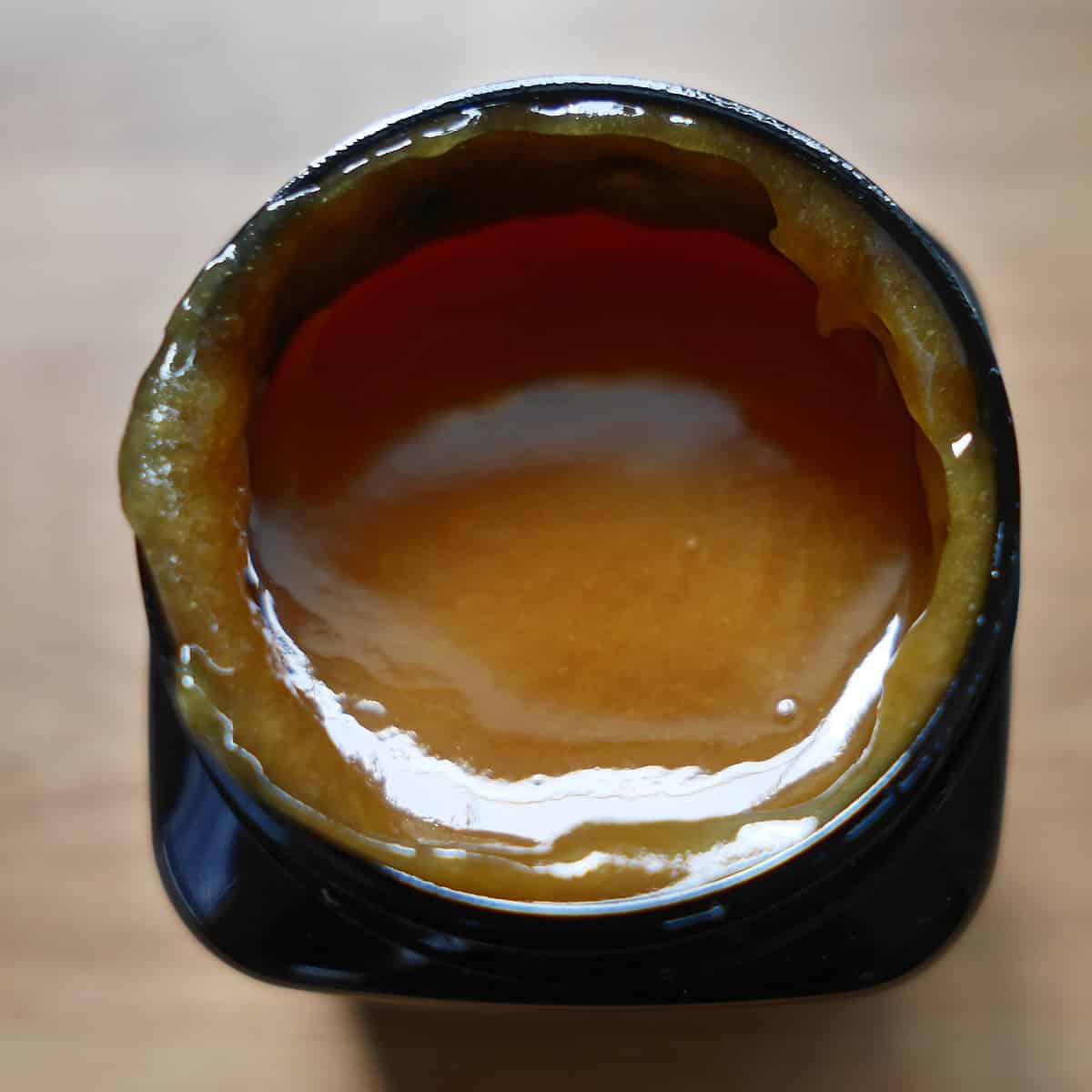
- Honey: Wedderspoon Manuka Honey from New Zealand
- Color: Dark Cream, Dark Brown, Nutty
- Aroma: Floral, Medicinal and Sweet
- Flavor: Complex, Nutty, Medicinal and Bitter Flavor
- Texture: Thick and Viscous, Almost Crystallized.
The honey itself is raw, unpasteurized and minimally processed, which preserves its natural enzymes and phytonutrients. It is also free of antibiotics, pesticides and glyphosate. The honey has a thick, creamy texture that spreads easily and melts in the mouth. It has a rich, golden color that reflects its purity and quality.
The aroma of the honey is floral and sweet, with hints of caramel and vanilla. The flavor is complex and balanced, with a smooth sweetness that is not overpowering. The honey has a slight tanginess and a mild bitterness that complement its floral notes. The honey also has a long-lasting aftertaste that lingers on the palate.
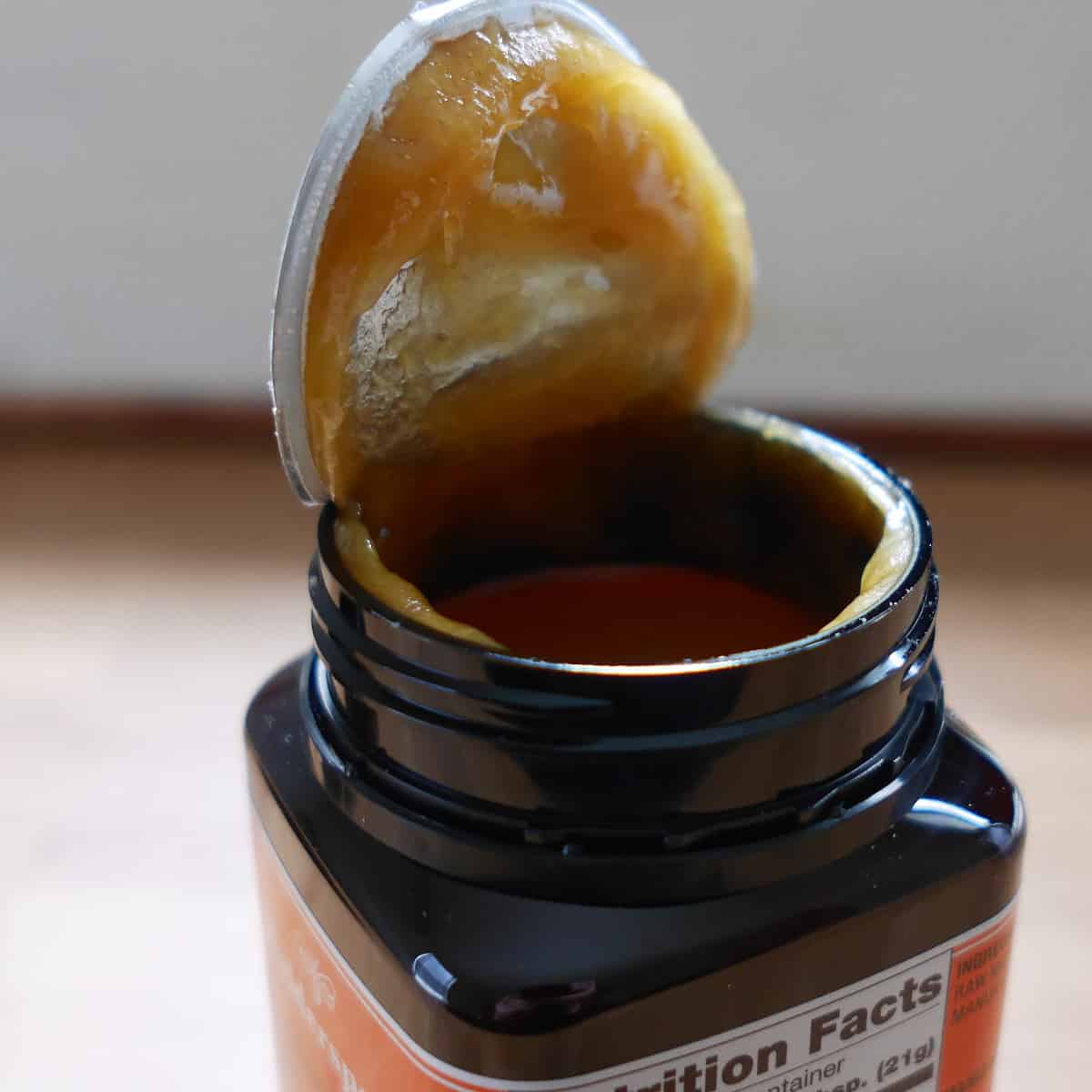
Wedderspoon Raw Monofloral Manuka Honey is a versatile product that can be used in various ways. It can be enjoyed as a daily energy boost, as a natural remedy for sore throat, cough, wounds and infections, as a pre- and post-workout supplement, as a beauty ingredient for skin and hair care, and as a natural sweetener for tea, coffee, smoothies, yogurt, oatmeal and more.
What is the Difference between Manuka Honey and Regular Honey?
The difference between manuka honey and regular honey is mainly based on the source of the nectar, the taste, and the health benefits of each type of honey. Here are some key points to compare them:
- Source: Manuka honey is made from the nectar of the manuka plant, which grows wild in New Zealand and Australia. Regular honey is made from various plants, such as clover, sunflower, buckwheat, etc., depending on the location and season of the bees.
- Taste: Manuka honey has a bitter flavor and a strong smell, while regular honey is sweet and mild. Some people may prefer the taste of manuka honey for its uniqueness, while others may find it too intense or unpleasant.
- Health benefits: Manuka honey has more antibacterial and anti-inflammatory properties than regular honey, due to its high content of methylglyoxal (MGO), a compound that kills bacteria. Manuka honey can help treat wounds, burns, coughs, colds, and other infections. Regular honey also has some antibacterial and anti-inflammatory effects, but to a lesser extent. Regular honey can help soothe sore throats, boost immunity, and provide antioxidants.
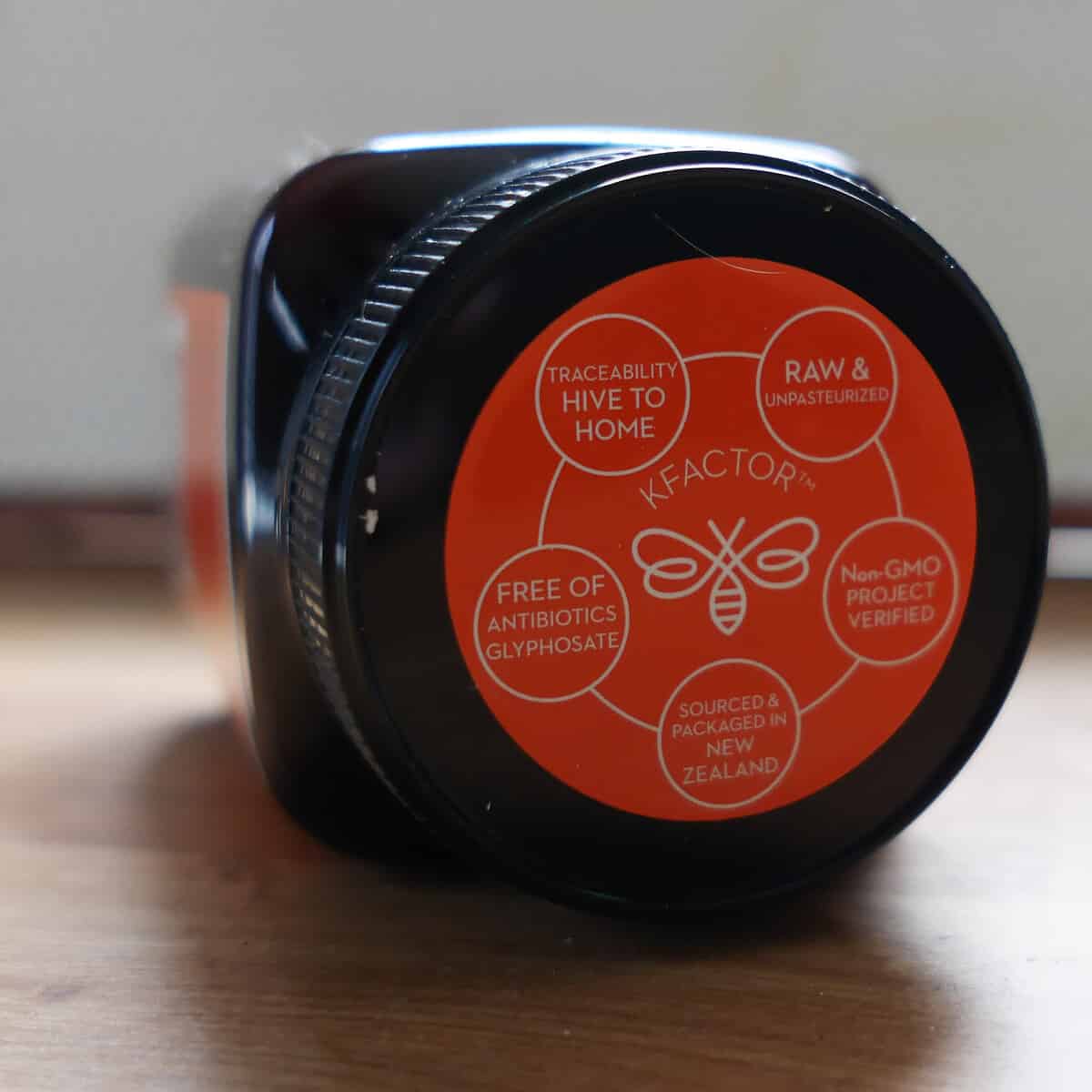
What is Kfactor?
Kfactor is a way of grading manuka honey based on how much manuka pollen it contains. It is used by Wedderspoon, a New Zealand company that makes manuka honey.
Kfactor is a grading system that measures the content of manuka pollen in manuka honey. It is used by Wedderspoon, a company that produces and sells manuka honey from New Zealand. According to Wedderspoon, Kfactor stands for “key factors” that focus on the holistic qualities of authentic manuka honey.
The Kfactor system has four levels: Kfactor 12, Kfactor 16, Kfactor 22, and Kfactor 24+. Each level indicates the percentage of manuka pollen in the honey. For example, Kfactor 12 means that at least 65% of the pollen in the honey is from the manuka plant, while Kfactor 24+ means that at least 90% of the pollen is from the manuka plant. The higher the Kfactor, the purer and more potent the manuka honey is.
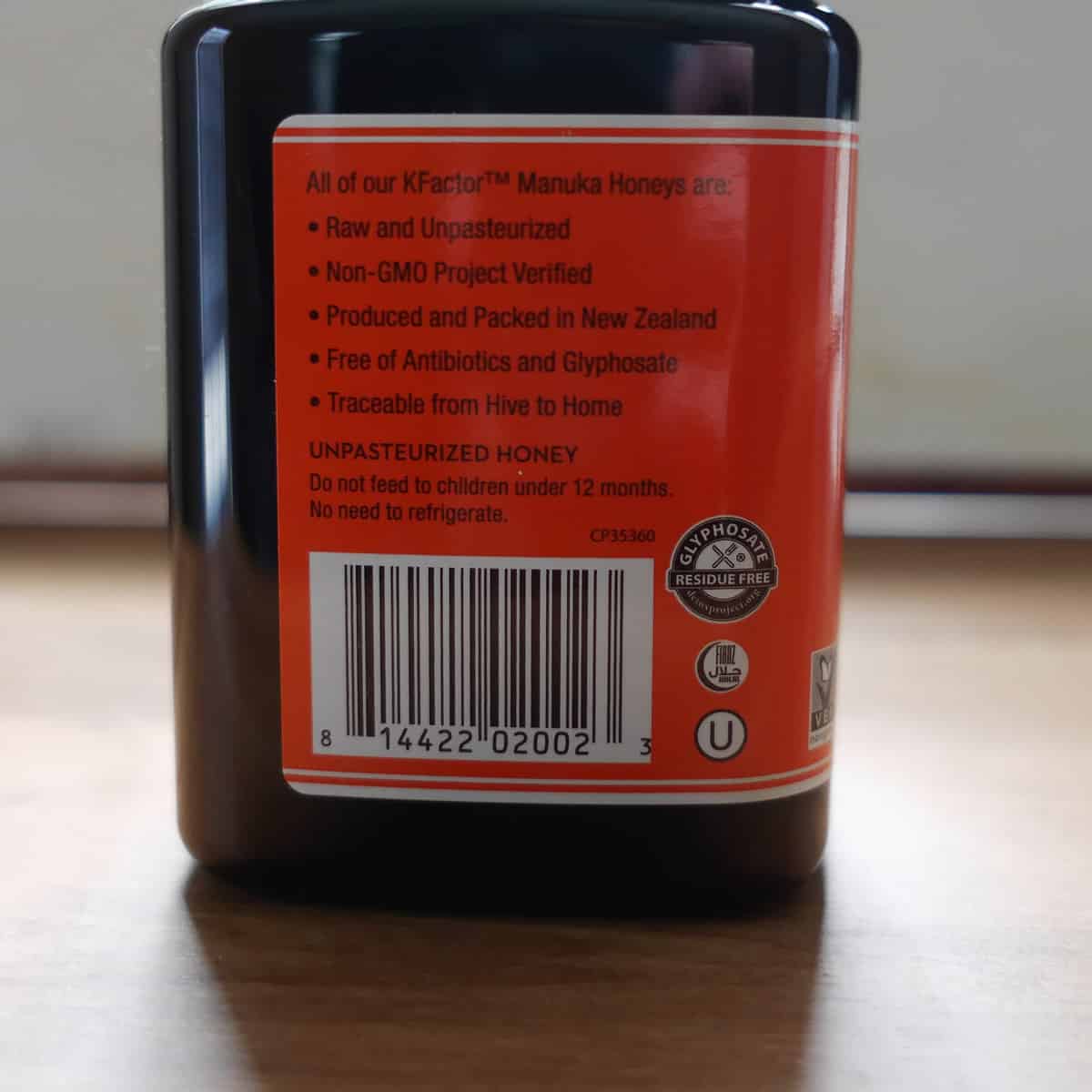
The Kfactor system is different from other grading systems for manuka honey, such as UMF (Unique Manuka Factor) and MGO (Methylglyoxal). These systems measure the antibacterial activity and the concentration of methylglyoxal, a compound that gives manuka honey its healing properties. The Kfactor system does not measure these factors, but rather focuses on the purity and origin of the honey.
Some people may prefer the Kfactor system because it ensures that the honey is not adulterated or diluted with other types of honey or substances. However, some people may prefer other systems because they provide more information about the health benefits and potency of the honey. Ultimately, it depends on your personal preference and needs.
How Do I Know If My Manuka Honey is Real?
QR Code
Scan the QR code on the jar. Some brands, such as Manukora or Manuka Health, provide a QR code on their jars that you can scan with your smartphone. This will give you information about the authenticity, potency, origin, and even the specific hive and beekeeper of your honey.
Check Label
Check the label for certification and origin. Genuine manuka honey should have a UMF (Unique Manuka Factor) or AMHA (Active Manuka Honey Association) certification, which indicates the level of antibacterial activity and potency of the honey.
The label should also state that the honey is made in New Zealand or Australia, as these are the only countries where the manuka plant grows naturally.
Pro Tip:
The thumb test: Take a small drop of honey and put it on your thumb. See if it spills or spreads around. If it does, it may indicate that it is not pure. Interestingly, real honey will stay on your thumb, and pure manuka honey is viscous enough to do so as well.
Is Manuka Honey Expensive?
It is also very expensive compared to other types of honey. Here are some reasons why:
- Limited production: Manuka honey is only produced in certain regions and seasons, where the manuka plant blooms. The harvest window can be as short as two weeks or as long as eight weeks per year. This makes the supply of manuka honey scarce and unpredictable.
- High demand: Manuka honey is popular among consumers who are looking for natural and organic products that can improve their health and wellness. It is also endorsed by celebrities and influencers who praise its benefits. The demand for manuka honey exceeds the supply, which drives up the price.
- Unique health benefits: Manuka honey has special compounds that give it more antibacterial and anti-inflammatory power than regular honey. These compounds include methylglyoxal (MGO) and leptosperin, which can help treat wounds, infections, skin problems, and more. Manuka honey is graded by different systems that measure these compounds, such as UMF (Unique Manuka Factor) and Kfactor. The higher the grade, the more potent and expensive the honey is.
- Careful processing: Manuka honey requires careful handling and processing to preserve its quality and potency. It has to be tested and certified by independent laboratories to ensure its authenticity and purity. It also has to be packed and stored in a way that prevents contamination or degradation.
- Shipping and exportation: Manuka honey has to be shipped from New Zealand or Australia to other parts of the world, which adds to the cost. It also has to comply with the regulations and standards of different countries, which may vary depending on the destination
Conclusion
Wedderspoon Raw Monofloral Manuka Honey is a delicious and nutritious superfood that supports whole body wellness. It is one of the best Manuka honeys on the market, and it is worth trying for anyone who appreciates quality and taste.





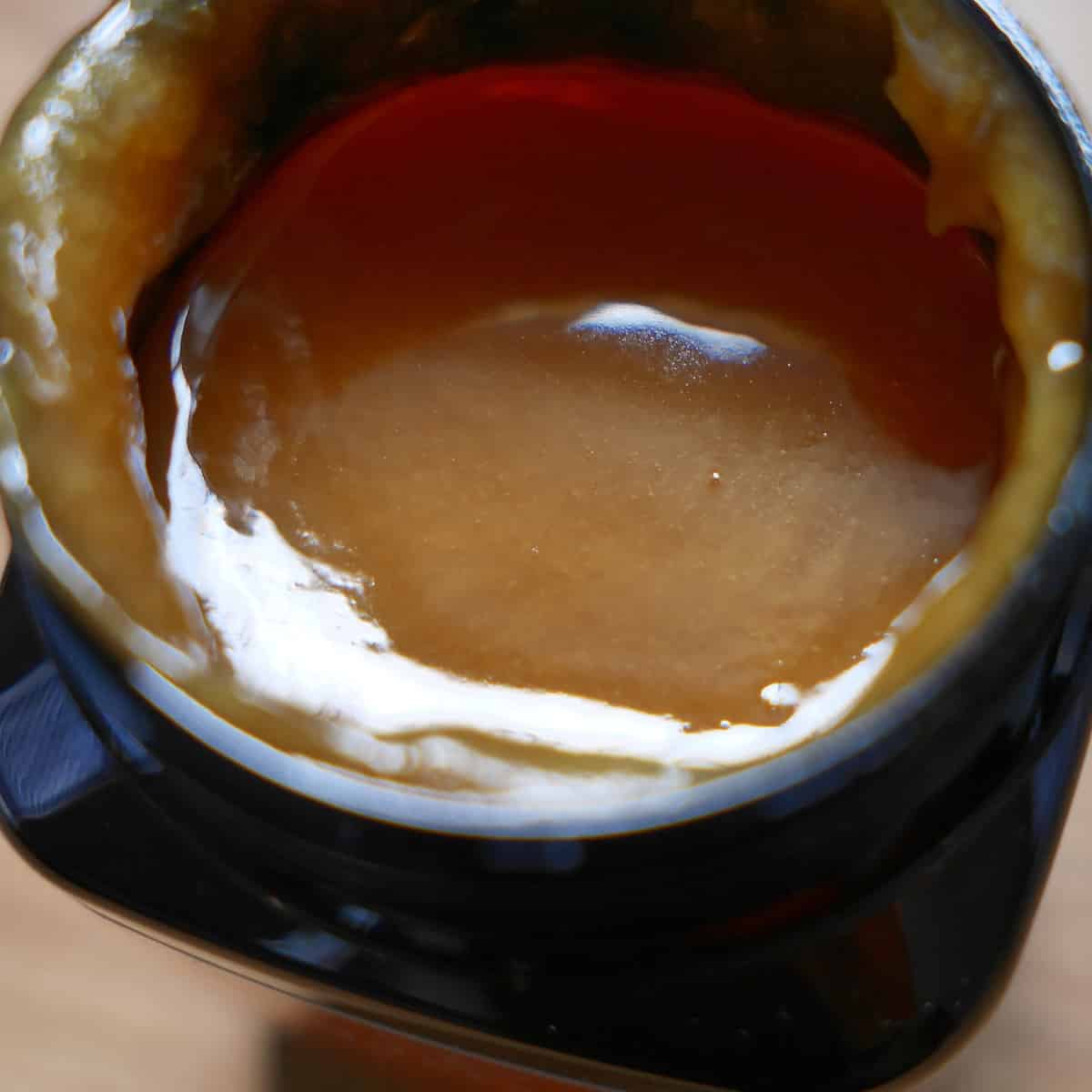



Wedderspoon Raw Monofloral Manuka Honey Review
Review Summary
Wedderspoon is a well-known brand that offers a variety of Manuka honey products at affordable prices. Their Raw Monofloral Manuka Honey is one of their most popular products. It has a smooth, buttery texture and a unique flavor that many customers enjoy.
Wedderspoon ensures that every step of the process, from harvesting to packaging and labeling, is carried out in the pristine New Zealand environment.
However, some customers have raised questions about the authenticity and quality of Wedderspoon’s Manuka honey. Unlike other brands that use grading systems such as UMF or MGO to measure the antibacterial strength of their honey, Wedderspoon uses their own KFactor system, which measures the amount of pollen in the honey but does not measure its antibacterial strength.
This has led some customers to question whether Wedderspoon’s Manuka honey is as potent as other brands.
In comparison, other brands such as New Zealand Honey Co., Comvita, and Manukora offer Manuka honey with UMF or MGO ratings, indicating their antibacterial strength. These brands are generally more expensive than Wedderspoon, but their honey is considered to be of higher quality due to the strict grading standards they follow.
In conclusion, Wedderspoon’s Raw Monofloral Manuka Honey is an affordable option for those looking for a tasty and versatile honey. However, if you are looking for Manuka honey with proven antibacterial strength, it may be worth considering other brands that use grading systems such as UMF or MGO to measure the potency of their honey. As always, it is important to do your own research and compare products before making a purchase.